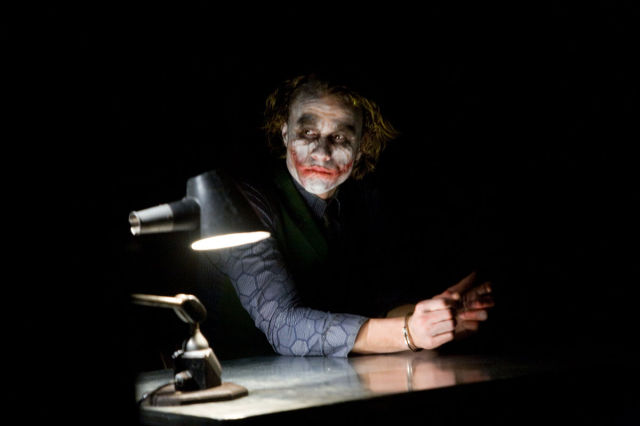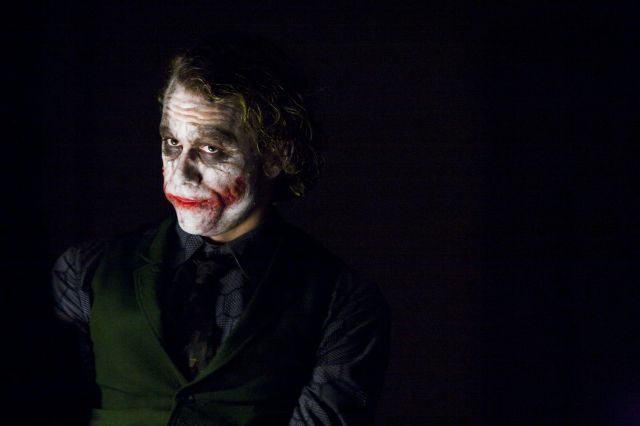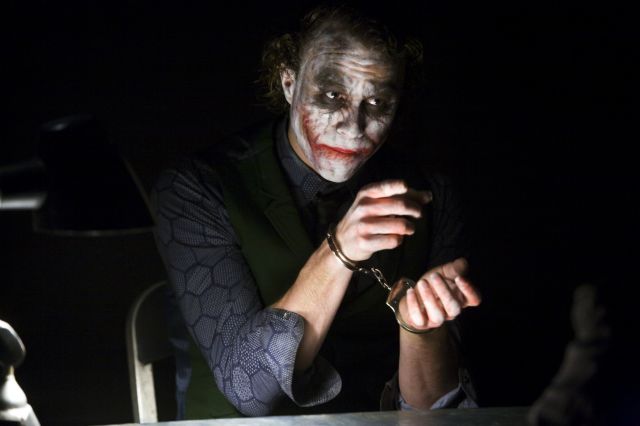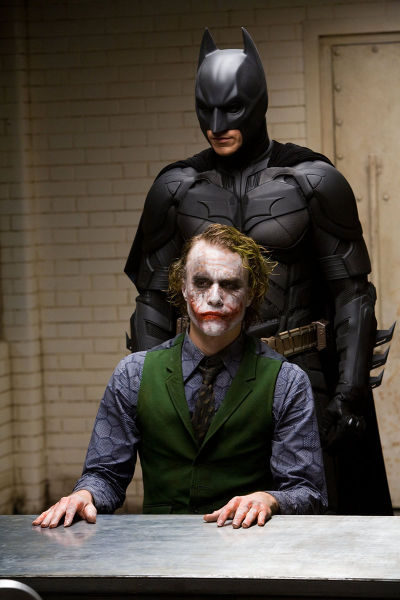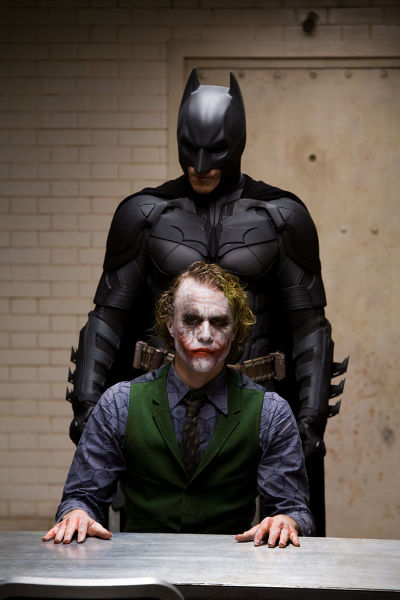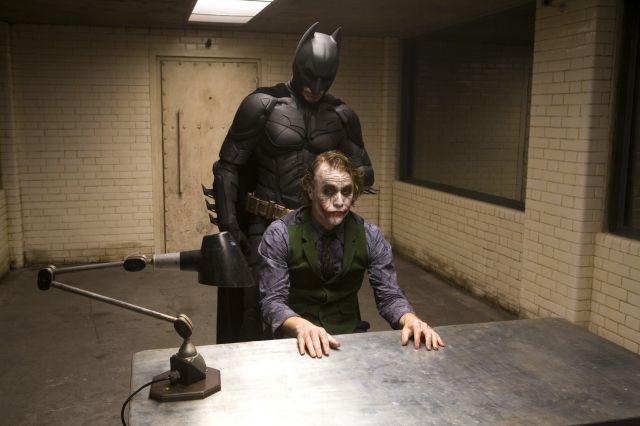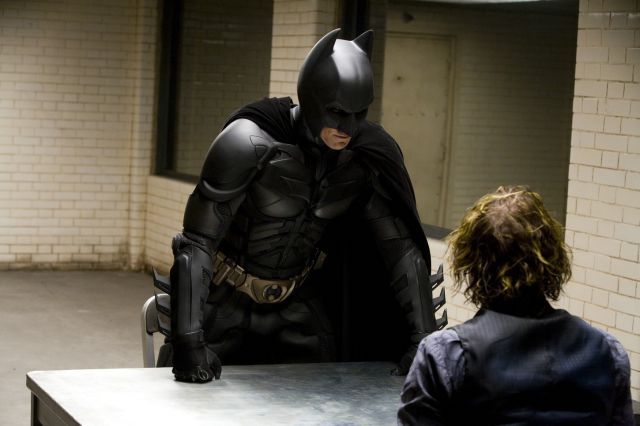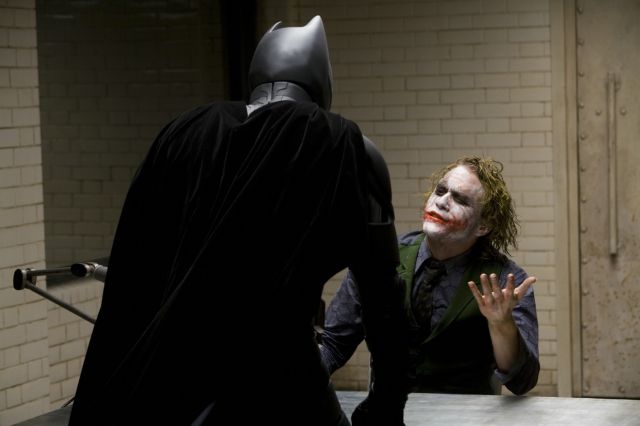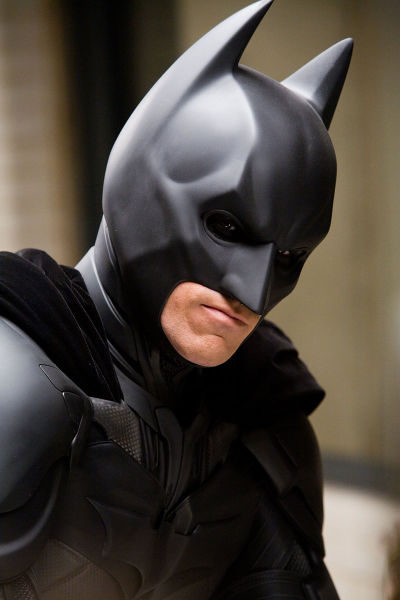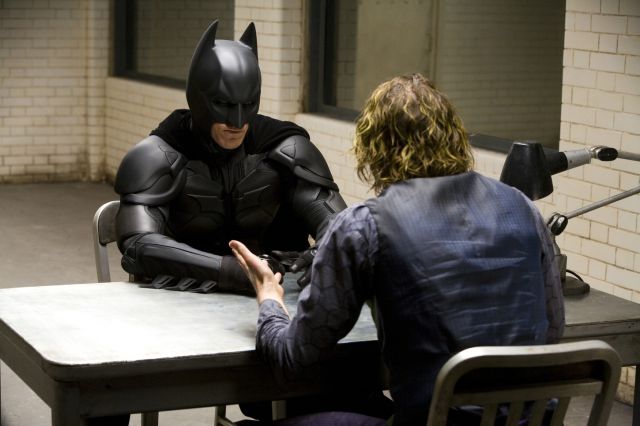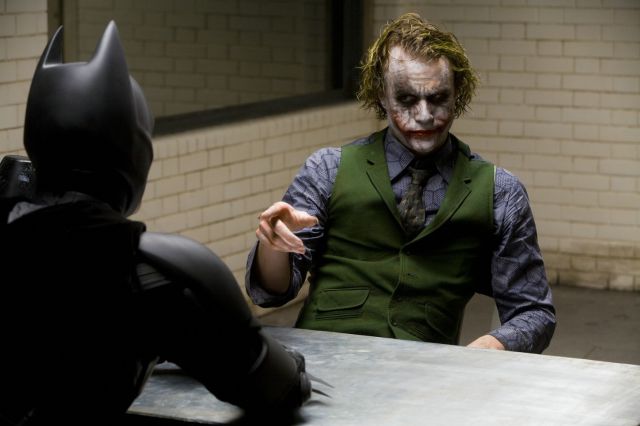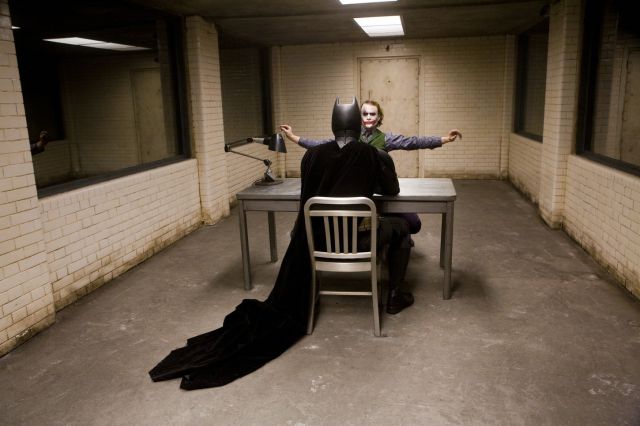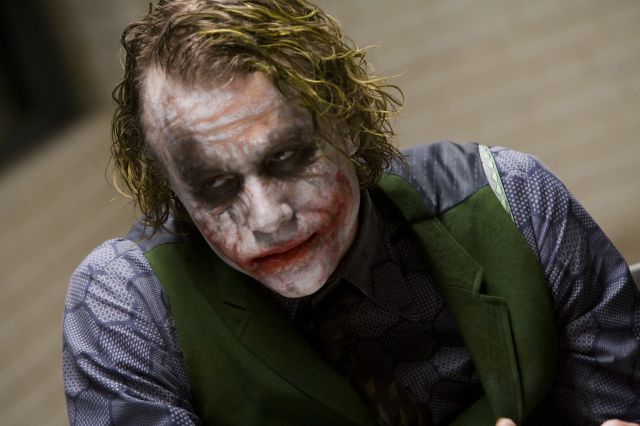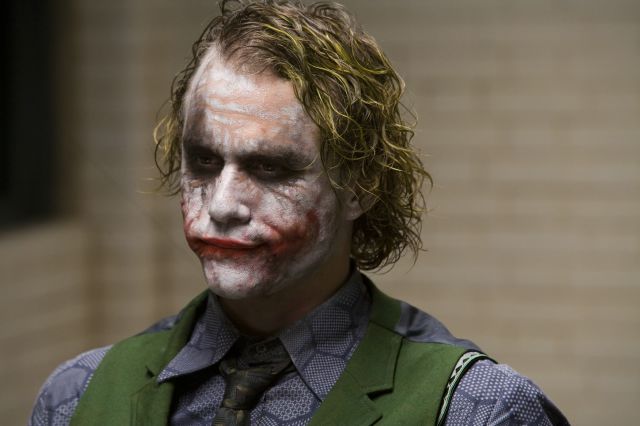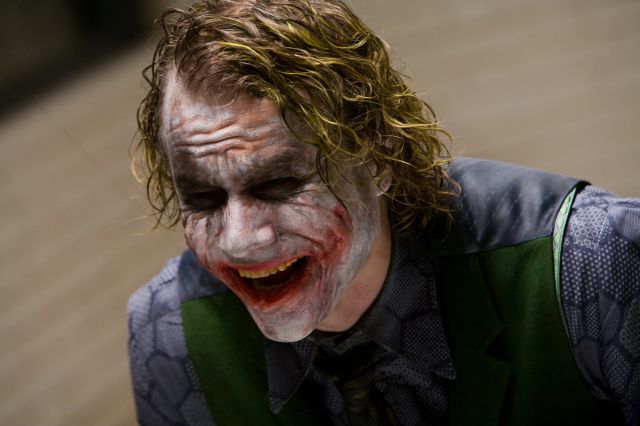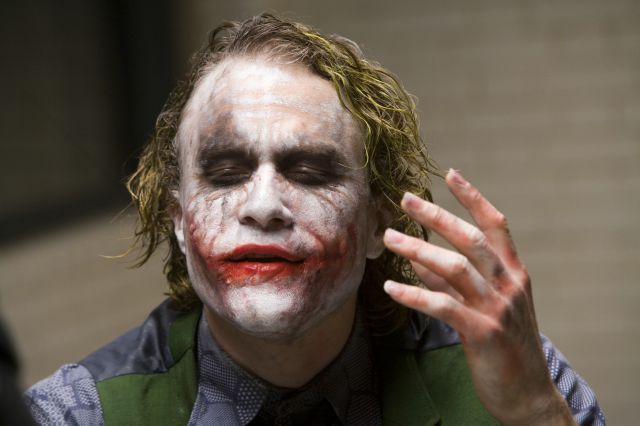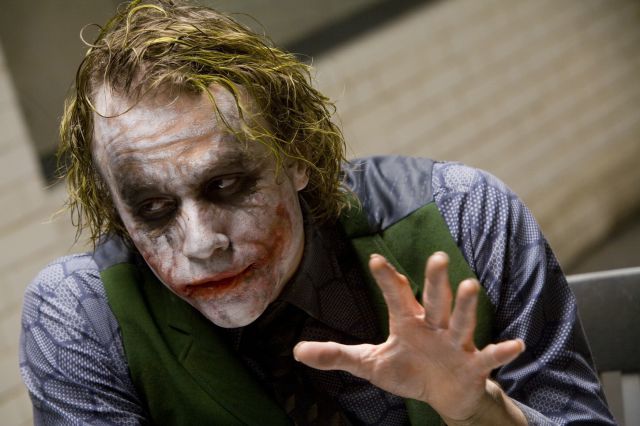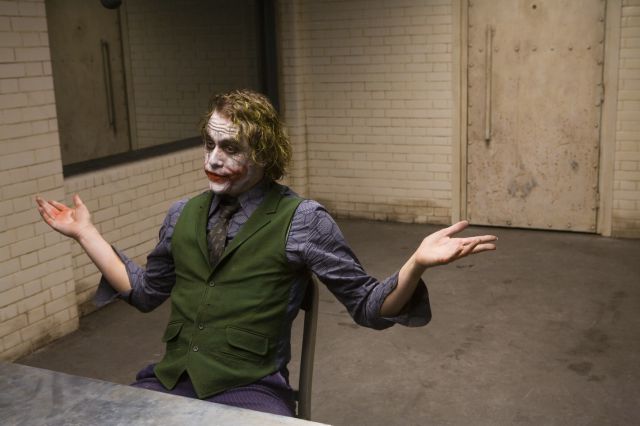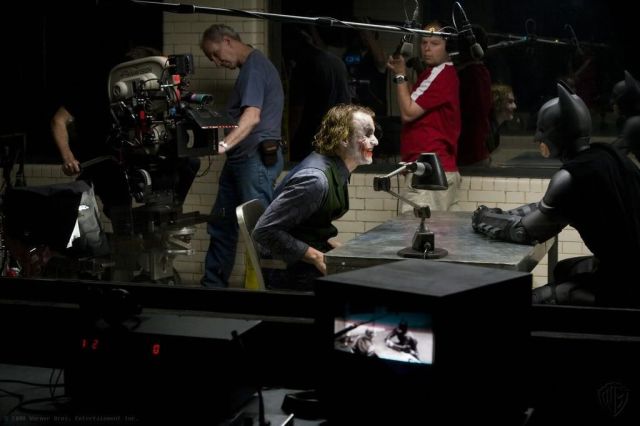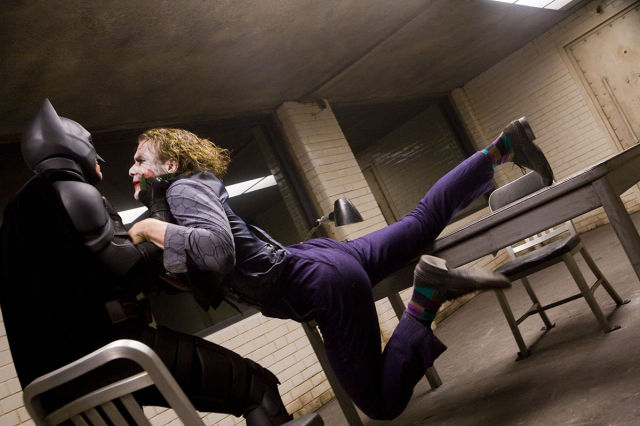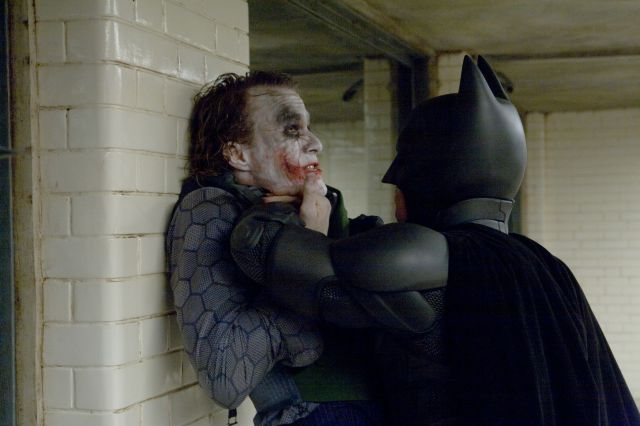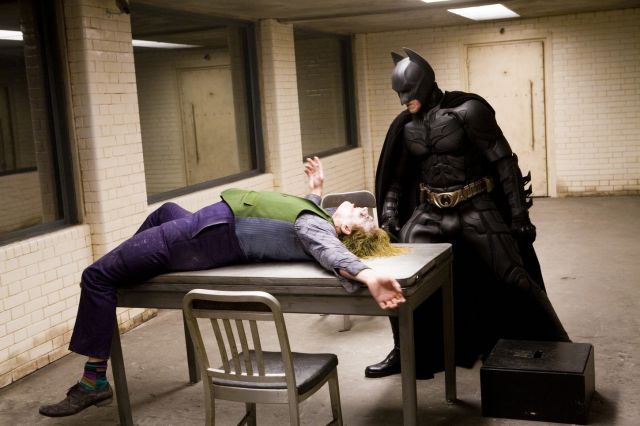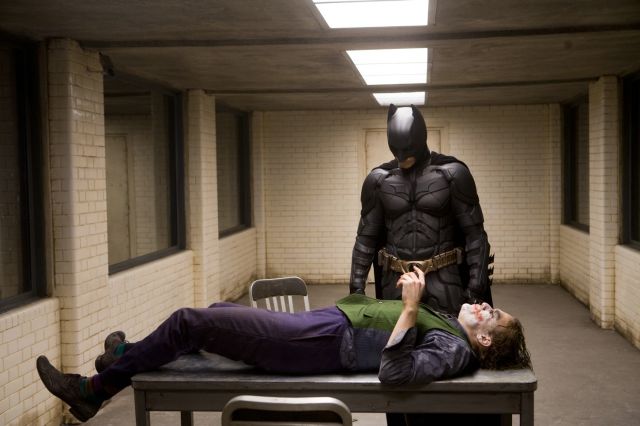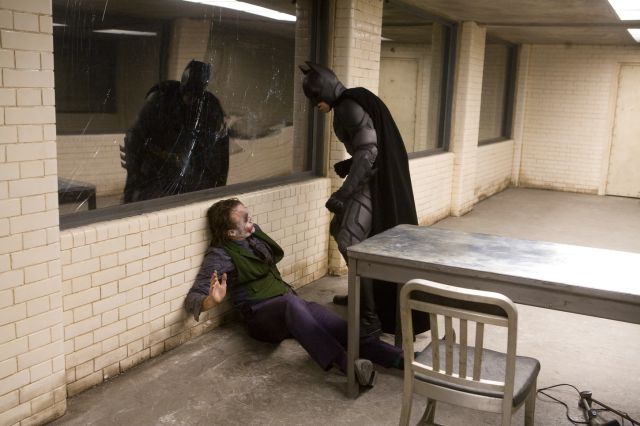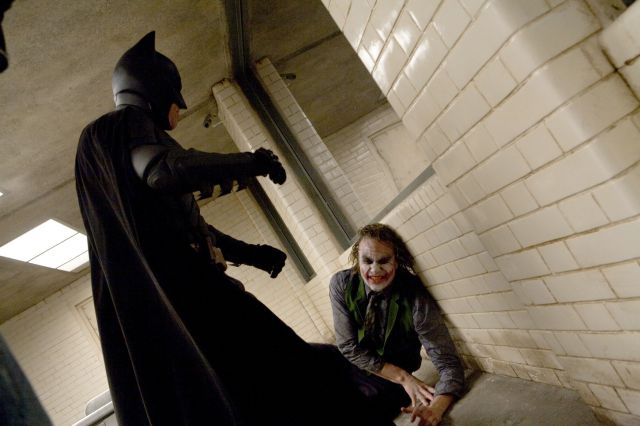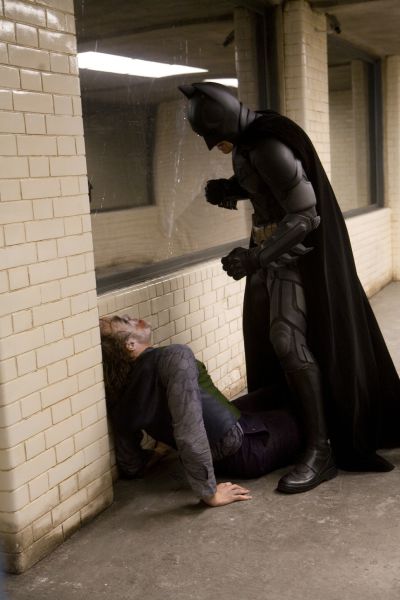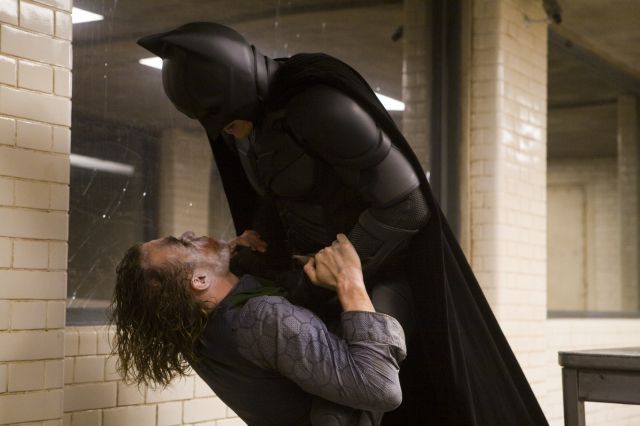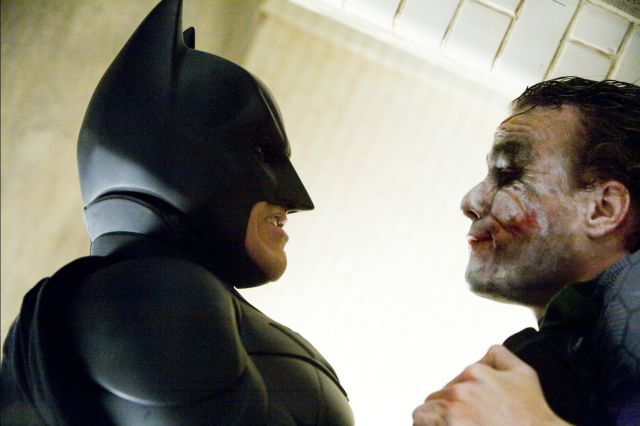- 5 Like
Photos Taken on Set During “The Dark Knight” Interrogation Scene (32 pics)
Posted in RANDOM 19 Aug 2014 10127
"The scene that is so important and so central to me is the interrogation scene between Batman and the Joker in the film. When we were writing the script, that was always one of the central set pieces that we wanted to crack."
"On the set, we shot it fairly early on. It was actually one of the first things that Heath had to do as the Joker. He told me he was actually pretty excited to tear off a big chunk early on, really get one of the Joker’s key scenes up in the first three weeks of a seven-month shoot. He and I both liked the idea of just diving in, as did Christian."
"The scene starts between Gary Oldman and Heath with the lights out, and [director of photography] Wally Pfister literally just lit the scene with the desk lamp, the table lamp, and nothing else."
"And then when the lights come on, Batman is revealed, and the rest of the scene plays out with a massive overexposure."
"Wally overexposed like five stops, I want to say, and then printed it down to bring some of the color back in. But it’s this incredibly intense overhead light which let us move in any direction. We had a handheld camera and shot however we wanted, be very spontaneous."
"It was a great set built into a location. It had all of the advantages of feeling that we were in a real place."
"Nathan Crowley, the production designer, built these great mirrors and this long, tiled room that I really loved the look of; it had the feeling almost of an abattoir or something."
"That all fed into the brutality of the scene. We wanted to be very edgy, very brutal."
"We wanted it to be the point at which Batman is truly tested by the Joker and you see that the Joker is truly capable of getting under everybody’s skin."
"I’m realizing this now about that scene — I haven’t thought this through before — the synthesis of all the different elements that I’m most interested in within filmmaking all come in that scene."
"We had rehearsed the scene a tiny bit. We had just ripped through it a couple of times in pre-production just to get some slight feel of how it was going to work."
"Neither of them wanted to go too far with it in rehearsal. They had to rehearse some of the fight choreography, but even with that, we tried to keep it loose and improvisational. They wanted to save it all."
"We were all pretty excited to get on with a big chunk of dialogue and this big intense scene between these two iconic characters."
"It was quite bizarre to see Batman across the table across from the Joker."
"You know, I could actually talk about this scene for hours."
"There are tight close-ups with just a little drift to the camera."
"We start in a very controlled way, but even within that frame, the way Heath is bobbing in and out..."
"...and he’s actually bobbing in and out of the focal plane because, you know, it’s very hard to follow someone whose leaning toward camera the whole time."
"It actually really adds something. We’re continually trying to catch him with the focus. You really see his movement back and forth."
"That way, even in a tight frame, you have this sense of strangeness."
"On the other hand, you have Batman sitting there just very, very controlled, restrained as you say."
"Then there’s a point where it spills over into real physicality and he drags the Joker across the table. We go handheld at that point and shot the rest of the scene with handheld to be very spontaneous in its movement."
"They had rehearsed the stunts and the fight stuff very specifically, but we really let the actors work within that. I had never seen anybody sell a punch the way Heath was able to with Christian. I got the violence I wanted. What I felt was really important creatively for the scene was that we show Batman going too far. We show him effectively torturing someone for information because it’s become personal."
"Rage is very much a central part of the story in ‘The Dark Knight,’ and that interrogation scene is the fulcrum on which the whole movie turns. I think Batman finds out — and Bruce Wayne finds out — a lot about himself in that scene. I was just delighted to get to see Christian show that rage. And it’s wonderfully balanced with Gary’s control as well."
"Even though everyone remembers the scene as being the Joker and Batman, Gordon played a very important part to setting it up and allowing this interrogation to happen."
"And then as he is watching from the sideline, he sees the exact point where this is going too far. He knows Batman well enough to observe this, to recognize it. He tries to get in, but Batman has locked the door."
"And what we get to lead to, by the end of the scene, when he’s just pounding on the Joker, I think Heath managed to find the exact essence of the threat of the Joker and who he is."
"He’s being pounded in the face and he’s laughing and loving it. There’s nothing you can do. As he tells Batman, “You have nothing to do with all of your strength.”
"There’s this sort of impotence of the strong and the armored and the very muscular Batman; he’s very powerful, but there’s no useful way for this power to be exercised in this scene. He has to confront that."
"Originally, at the end of that scene, once the Joker reveals his information, Christian dropped him and then, almost as an afterthought, he kicked him in the head as he walked out of the room. We wound up removing that bit. It seemed a little too petulant for Batman in a way."
"And really, more than that, what it was is that I liked how Christian played it: When he drops the Joker, he has realized the futility of what he’s done. You see it in his eyes. How do you fight someone who thrives on conflict? It’s a very loose end to be left with."
Credits: izismile.com
0 Comments ?
Tags
Archives
- October 2024 (92 entries)
- September 2024 (111 entries)
- August 2024 (135 entries)
- July 2024 (133 entries)
- June 2024 (140 entries)
- May 2024 (155 entries)
- April 2024 (145 entries)
- March 2024 (146 entries)
- February 2024 (143 entries)
- January 2024 (148 entries)

